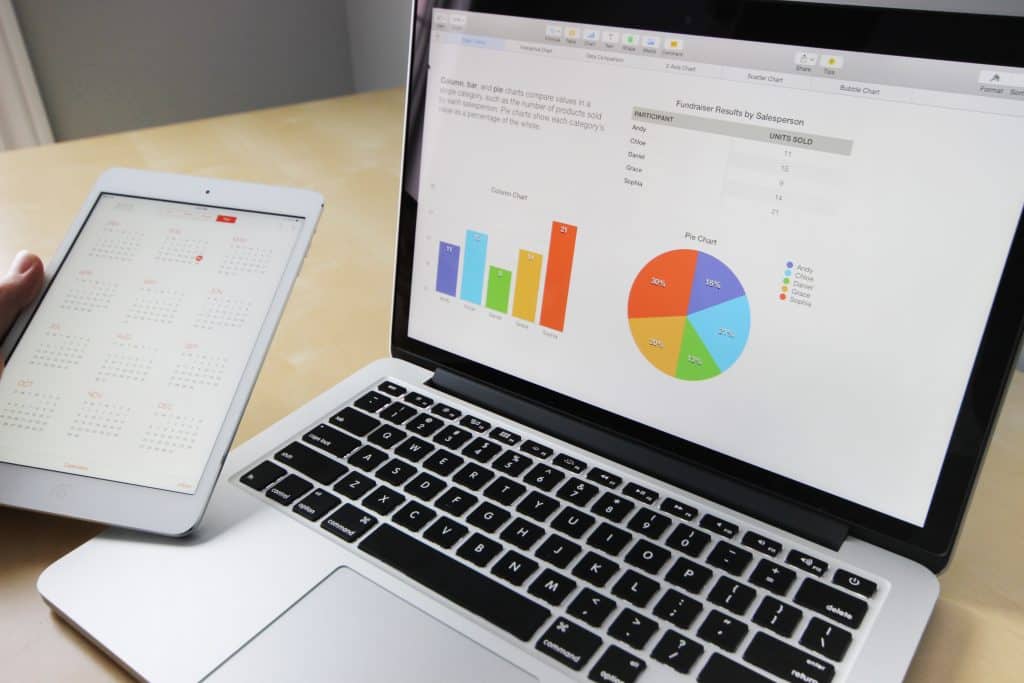In today’s media-buying landscape, there are an overwhelming number of options available to advertisers. But with so many choices, how does one determine which media-buying method is the most beneficial for their brand? As a marketer, you have probably heard about the importance of data-driven marketing and leveraging different data points to target the right audience at the right time. Programmatic advertising – aka programmatic media buying – helps you do just that.
Programmatic advertising is a strategy used by advertisers to find and target specific audiences based on multiple criteria. Commonly used in digital advertising, programmatic media buying uses algorithms and artificial intelligence (AI) to automate bidding and ad placement. Programmatic advertising is an umbrella term that describes this process. This blog post will explore programmatic buying, its benefits, and how it works.
What is programmatic media buying?
Programmatic media buying refers to the process of buying media inventory via automated software and using data to determine the target audience. The software is used to optimize the process of buying media inventory at scale and with precision.
Programmatic media buying allows advertisers to manage their ad spending more effectively, with the ability to target specific audiences. This is done by using data to find the right audiences across various ad networks and inventory sources. You can apply programmatic media buying across different ad types and media types. And depending on the goals of the advertiser, it can be used to buy a wide range of ad units such as display, video, mobile, audio, or virtual reality ads.

What types of programmatic ad buying are there?
1. Real-Time Bidding (RTB)
Real-Time Bidding (RTB) is an auction-based pricing model used in programmatic ad buying. The RTB model lets advertisers bid on individual ad inventory in real time based on a wide range of data points. Advertisers can target a wide range of audiences with RTB, like specific demographics, locations, devices, time of day, or other factors. To succeed with RTB, advertisers must have a robust data management platform (DMP) and be able to use data to target specific users.
2. Private Marketplace (PMP)
Unlike the real-time bidding model above, the private marketplace model is a proactive model where advertisers get access to inventory that has been pre-specified by the publisher. Publishers create a digital asset that outlines their stock and the terms of how it can be used to advertise and how much it costs. Advertisers can then browse the digital assets and buy the inventory that best fits their needs. Since the inventory is pre-specified, advertisers are more likely to access premium inventory at lower costs. Publishers benefit from this model because they can sell their inventory to advertisers who would have otherwise been out of reach due to high prices.
3. Preferred Deals
The preferred deals model invites individual publishers to sign agreements with advertisers to make inventory available at lower costs. Advertisers can then find and buy inventory from these publishers without purchasing the whole inventory from an open exchange. Publishers benefit from signing preferred deals with advertisers because it allows them to sell inventory that would otherwise remain unsold. The advertisers benefit because they can access premium inventory for lower costs. The model is flexible in that publishers can set their own prices.
4. Programmatic Guaranteed
The programmatic guaranteed model is similar to the preferred deals model but offers extra assurance for advertisers. Publishers sign agreements with advertisers to make inventory available at lower rates. However, these rates are locked in, and publishers can’t change them. Advertisers benefit from the programmatic guaranteed model because they get access to premium inventory at lower rates, and publishers benefit because they get paid even if the advertiser doesn’t perform as expected.
How do programmatic ads work?
The process of buying programmatic ads involves multiple parties, including ad networks, ad servers, and ad exchanges. Here’s how it works: When a user requests content, the publisher’s ad server makes an API call to its ad network. The ad network then connects with an ad exchange to find a suitable ad for that user based on criteria like keywords, click-through rate (CTR), cost per click (CPC), or others. The ad server then delivers the ad to the user, and the ad exchange records the data from the interaction. The data from the ad exchange is then sent to your ad server, and you can use this data to make future decisions about your campaign.

What are the benefits of buying programmatic ads?
Programmatic ad buying comes with several benefits for both publishers and advertisers. Let’s take a look at some of the benefits for each party:
Publishers – Publishers benefit from programmatic ad buying because they can sell ads that would otherwise go unsold and access a higher revenue per thousand impressions (RPM) rate.
Advertisers – Advertisers benefit from programmatic ad buying because they can use data to target users and ensure their ads get the most views. Plus, they get access to premium inventory at lower costs.
With the benefits of programmatic ad buying outlined above, it’s easy to see why it’s such a popular way of buying ads. By leveraging data to target the right audience at the right time, advertisers can make their ads more effective and efficient. With so many advantages, it’s easy to see why programmatic ad buying is such a popular way of buying ads.
Conclusion
As you can see, programmatic advertising is an excellent way to reach your target audience efficiently and cost-effectively. With the help of AI and advanced data analysis, you can target your ideal audience for a given product or service in real-time and display your ads across various channels.














Leave a Reply